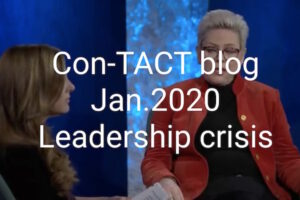
Interview with Dr. Wolfgang Amann, Executive Director Executive Education, Goethe Business School Frankfurt
Short biography: Dr. oec. (HSG) Wolfgang Amann learned his research skills at the Wharton School in Philadelphia and his executive education skills at IMD in Lausanne. After gathering experience in top management consulting, he has been marketing, designing, directing and delivering executive education seminars for a number of years. He directed in the past the Henley Center for Creative Destruction as well as the Henley Center of Excellence in Case Writing. He has also been Vice-Director of the Executive School at the University of St.Gallen where he was the Executive Director of a variety of international programs including all activities along the ‘value’ chain from program innovations, marketing, admission, operations, career services and alumni management.
Dr. Amann has also been a visiting professor in the field of international strategy and sustainability at Hosei University in Tokyo, Tsinghua in Beijing, the Indian Institute of Management in Bangalore, ISP in St.Petersburg, Warwick Business School and Henley Business School in the UK.
He now serves as Executive Director of Executive Education at Goethe Business School of the University of Frankfurt where he also teaches top management seminars on strategy and governance. He has written more than 100 case studies for executive education seminars and won the oikos global sustainability case writing award. He has received several best lecturer awards, such as twice in a row the most prestigious European teaching award for his course on “Corporate strategy and governance: how to add value”, which was chosen as the top course amongst all CEMS courses offered at top business schools in 17 European countries.
He has written several books on corporate strategy, governance, managing complexity, humanism in business and work-life-balance.
The interview with Dr. Amann focuses on two questions:
•What are the three key aspects in complexity management to create and retain value when one tries to reduce or manage it?
•What are strategies to successfully manage a high rate of innovation without being victim of an exploding complexity?
As the audio is in German I have written a short summary of the key points Dr. Amann made during the interview:
The first aspect is that one has to accept the turbulent context in which organisations have to operate in today’s world. This affects a company’s strategies and its success with innovative products. Research shows that up to 80% of strategies have to change along the way to adapt to market changes; up to 95% of new product initiatives cannot be classified as successful. This requires high level of flexibility in planning and thinking to operate successfully in dynamic markets.
The second aspect is to shift complexity into areas where it really creates value. Key areas would be using the market and the consumers to find solutions to problems and create new product ideas; hence, tapping into the rich resources of the market through Open Innovation. This requires a shift in the company culture as the creative process happens in the market and the organisation needs to be prepared to use such a diversity offered by the market to filter out those ideas with the highest value to consumers. Although this creates more complexity, yet only in areas where the customer/consumer really values and pays for it.
The third aspect is to be very rigorous in standardizing processes and possibly products to eliminate energy drains in administrative work and to allow managers to focus their energy on core tasks of the business where value is added. A survey showed that only 10% of managers focus their energy consciously on these areas. This requires a more conscious mindset to invest time and energy in areas which are of importance and add value to the organization.
Strategies on how to deal with complexity in organization can be found in the book introduced in this review. It is written in a sort of ‘buffet style’ covering a wide variety of industries and companies with plenty of examples.



